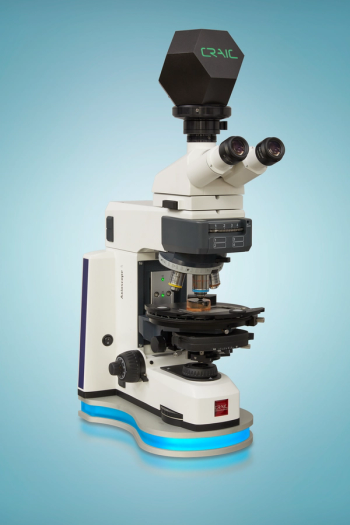
Wavelength Tech Forum: Industry Trends
After the tumultuous economic times that have been experienced worldwide over the past 12-18 months, Spectroscopy's experts take a look at the current state of the industry. Joining us for this discussion are David Ball, Ohio University; Howard Mark, Consultant, Suffern, NY; and Stuart Press, Strategic Directions Int'l, Inc.
After the tumultuous economic times that have been experienced worldwide over the past 12-18 months, Spectroscopy's experts take a look at the current state of the industry.
Joining us for this discussion are David Ball, Ohio University; Howard Mark, Consultant, Suffern, NY; and Stuart Press, Strategic Directions Int'l, Inc.
How much of a growth area will portable instrumentation be in the future? Is there a chance this market will reach a limit?
Ball: There definitely will be a growth, and – as other industries have found out – there will be a limit. However, it is likely that portable instrumentation will get smaller over time, so there still seems to be a market for replacements in the foreseeable future.
Mark: There's already a noticeable increase in the number of portable, and especially handheld, instruments being shown and advertised. I'm sure that a lot of that is due to the money becoming available from the government for development, especially for DHS-related applications. Ever since 9/11, there has been growing concern not only about air contaminants (such as the airborne microdebris from the collapse of the WTC. I distinguish that from air pollution, which I consider to be the "conventional" airborne products that have been of concern for a much longer time: CO, SO2, NOx, etc.). In any case, besides the air contaminants, there are the instruments intended to detect all possible sorts of terrorist activities: gaseous poisons, biological weapons, etc. There is growing concern about a HAZMAT team arriving on the scene of an "event" and having to determine on the spot, when a classical "white powder" is found, whether that is something that police authorities should be concerned about. There is a lot of effort being expended in attempting to answer that question. You can hardly pick up an issue of an industry journal without finding research articles addressing that.
Press: I believe handheld and portable spectroscopy instruments will continue to see strong growth for a long time to come. In many cases, they are already as capable as lower and moderate-end benchtop systems. In the long run, I see them gradually displacing much (but not all) demand for benchtop systems because they offer the end-user the flexibility of working anywhere in the lab, on the production line, or in the field.
What technique or techniques do you see gaining in popularity and why?
Mark: I'm seeing, or at least becoming more aware of, more and more Raman. I don't know if that's because it's actually becoming more popular, or because more manufacturers are getting into the technology, or just because it's being promoted and advertised more. Maybe at Pittcon we can see if there are more vendors showing Raman instruments; that will at least address possibility #2.
Press: Most techniques are continuing to see some level of growth in demand.
What is the state of education currently? Do graduates leave college with more or less of a foundation in the basics of spectroscopy compared to 10 years ago? 20 years ago?
Ball:Undergraduate education in spectroscopy seems to be stable. The biggest changes I have seen are in the advances in computer control and analysis, both on-site and remotely. Unlike 20 years ago, virtually all data collection and analysis is digital, computer-based. It is not unusual for a student to perform a spectroscopy experiment without a hard copy of a spectrum!
What is the level of interest in spectroscopy among undergraduates currently? Is it on the rise or the decline?
Ball:Again, it seems stable in terms of the techniques used; see comment above regarding where I see the largest changes are being seen.
What do you think is the most important trend currently emerging in the spectroscopy marketplace?
Mark:I think you nailed it before, in question #2. Because of the intenseneed, and the money available from the government for development, handheld and portable instruments for doing analysis of unknown materials on-site, wherever that may be, is where the action is, and probably will continue to be at least for a while. There seem to be new, smaller, companies joining the older, established ones and using new and different technologies in their instruments. One vendor, for example, even though founded and being run by some of the leaders in development and application of FTIR, elected to design a mid-IR instrument based on a diffraction grating and array detector becasue it could be smaller, and fast enough to measure spectra even when moving. When I saw their prototype at EAS, it was already small enough to put into a van, and I expect to see at least a nearly commercial version shown at Pittcon. This is an exception, however. Most of the new portable instruments seem to be based on Raman, though, so portability and Raman are rising sort of hand-in-hand. I wonder if Pittcon will hold any surprises for us, in thisregard.
Press:Certainly portable and hand-held instruments are continuing to see very strong growth as already addressed. Terahertz spectroscopy is rapidly becoming established as another significant segment of the molecular spectroscopy market.
What do you think?
If you are interested in participating in any upcoming Technology Forums please contact Editor-in-Chief
Newsletter
Get essential updates on the latest spectroscopy technologies, regulatory standards, and best practices—subscribe today to Spectroscopy.





